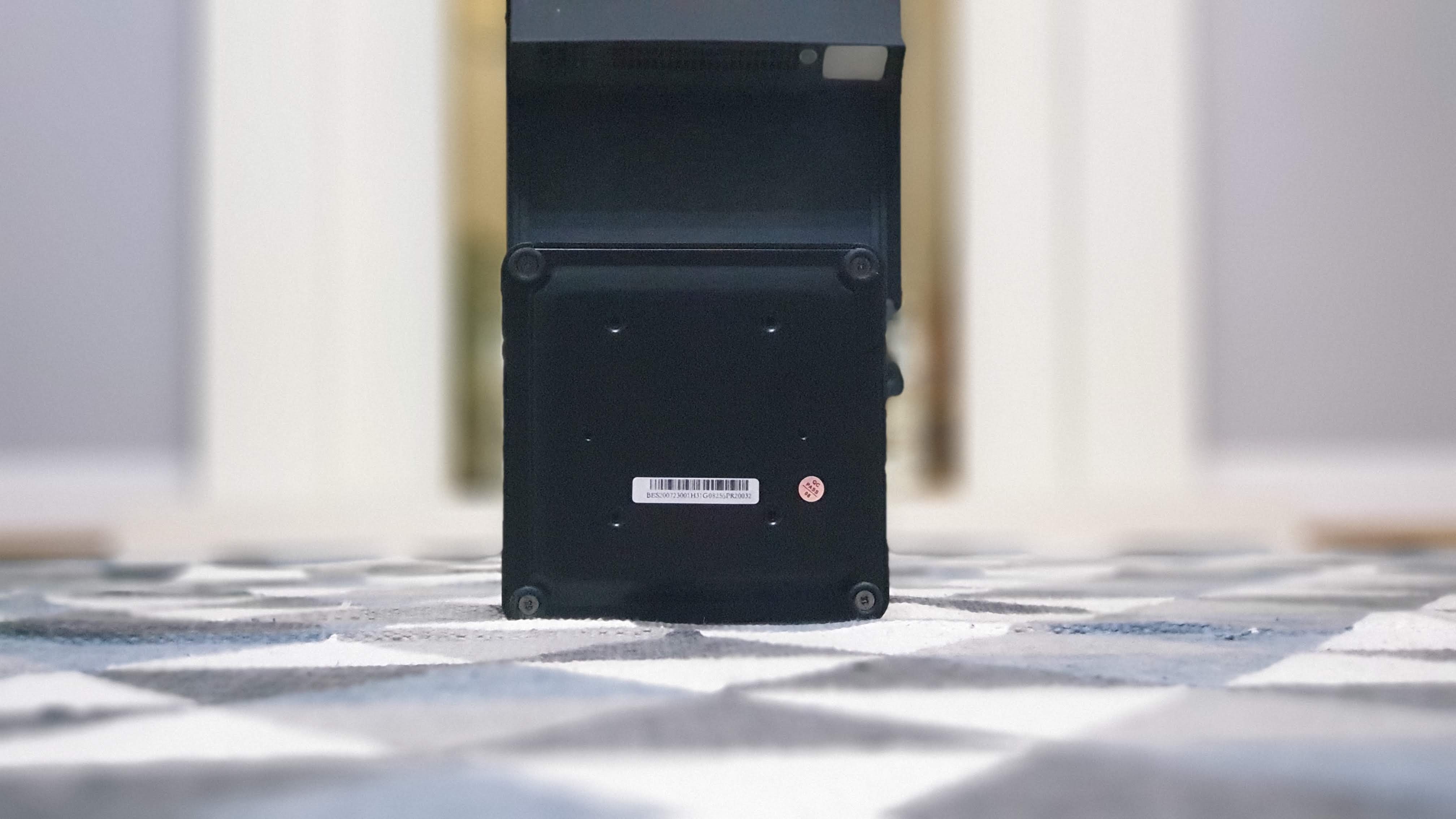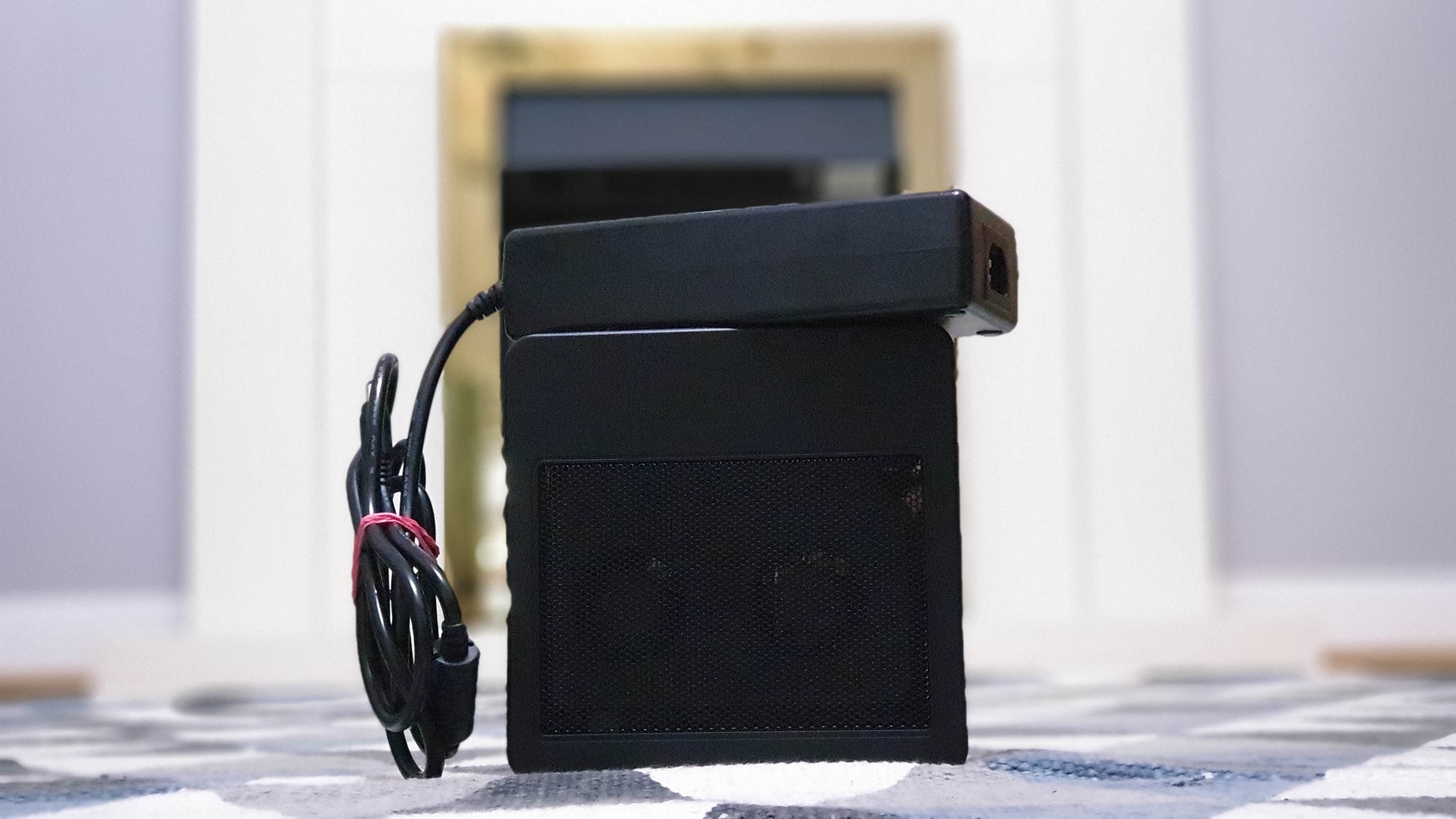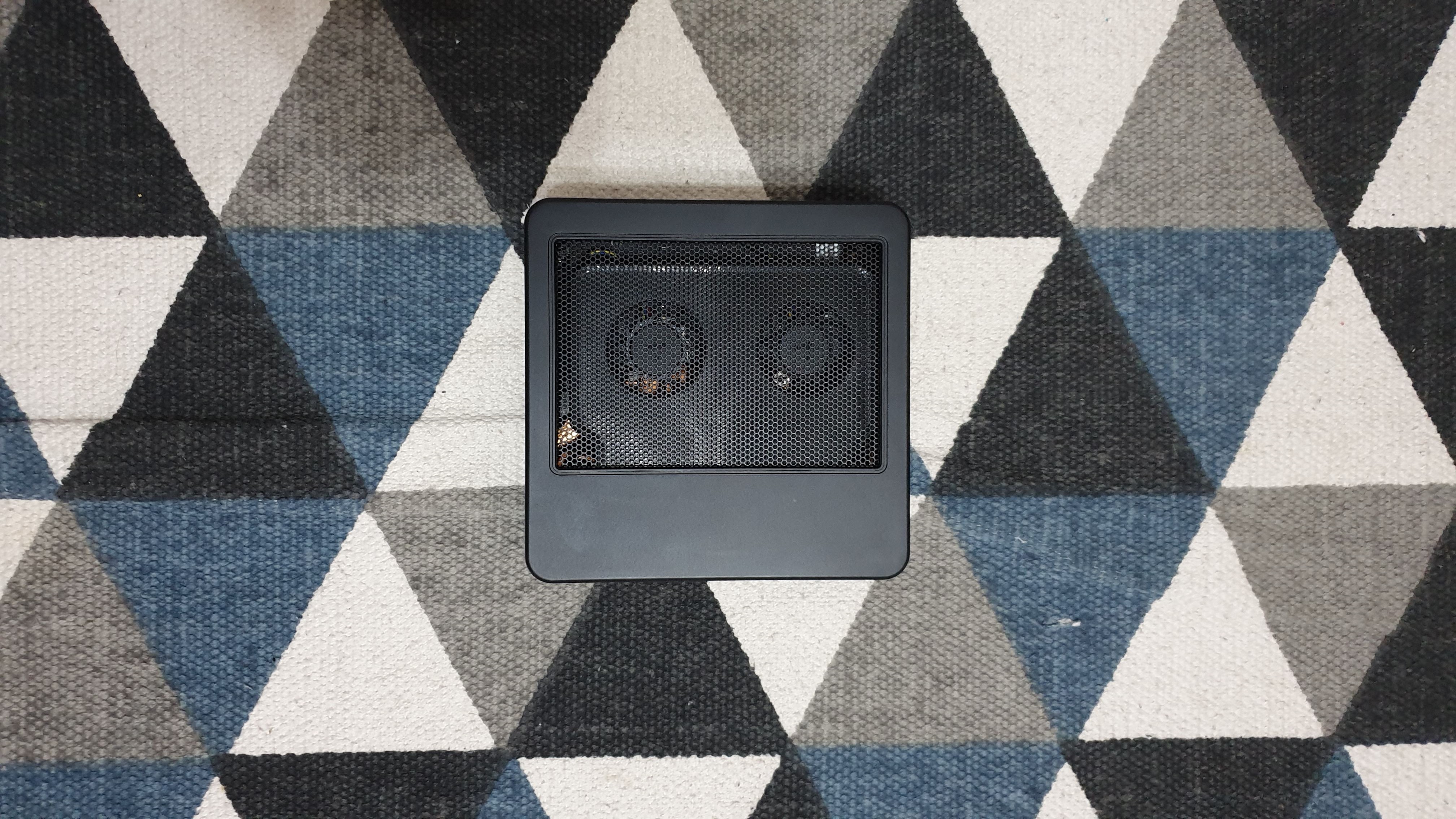TechRadar Verdict
Minisforum proved that a capable workstation doesn’t have to be expensive; the EliteMini H31G is a powerful statement of intent from the Chinese manufacturer with a balanced performance that hits all the right notes. Bravo!
Pros
- +
Two year warranty
- +
Good compute and graphics performance
- +
Excellent expansion options
- +
Solidly built
- +
Windows 10 Pro
Cons
- -
Noisy under load
- -
We’d love more USB ports please!
- -
Storage performance could be better
Why you can trust TechRadar
The mobile-first world that we’re now in means that it is now cheaper to buy laptop components than desktop ones due to economies of scale. That explains partly the surge in powerful mini computers from a flurry of newcomers hailing from the Far East.
One of the more prominent ones is Besstar Tech, also known as Minisforum whose HDMI Mini PC, the S41, we recently tested. The EliteMini H31G has just been released with the vendor claiming that it is the world’s smallest mini desktop with discrete graphics. In other words, a great potential replacement for the traditional desktop PC, so Minisforum says, thanks to a 1.4L volume.
- Also check out our roundup of the best thin clients
Price
The EliteMini H31G can be purchased from Minisforum directly for as little as $399. Our configuration, which comes with an Intel Core i7-9700F, 8GB of RAM and 256GB SSD retails for $749 at the time of writing after a $50 discount when you use the coupon code C-S3HXSRJ0BCYD at checkout.
- Want to buy tech from online Chinese retailers? Read this first.

Design
This mini PC shares some design cues with a recent product we reviewed, the TBao MN25. Like the latter, the H31G is a square slab with a small footprint (154 x 154 x 62mm) and a total volume of 1400cc, far smaller than a comparable tower model.

The assemblage of metal and plastic works well despite having some rough edges and questionable but ultimately minor design choices.

Connectors include: HDMI, Gigabit Ethernet, USB Type-C DisplayPort, a proprietary barrel-type power socket, four USB 3.0 and three audio ports.

There’s also a microSD card reader and - it won’t come as a surprise - there’s a lot of holes and fins in the chassis to cool the components inside. Minisforum bundled an additional dustproof net, a mini DP cable, a mini HDMI cable and a VESA mount.
Sign up to the TechRadar Pro newsletter to get all the top news, opinion, features and guidance your business needs to succeed!

Hardware
Here are the full specs of the EliteMini H31G configuration sent to TechRadar Pro for review:
CPU: Core i7-9700F
Graphics: Nvidia Geforce GTX 1050 Ti
RAM: 8GB Kingston DDR4
Storage: Kingston OM8PDP3256B-A01 256GB
Ports: 4 x USB 3.1, 1 x USB Typ-C DisplayPort, microSD Card reader audio jack, 1 x HDMI
Connectivity: Intel AX200, 802.11ac Wi-Fi 6, Bluetooth 5.1
Weight: 1083g
Size: 154 x 153 x 62mm (H x W x D)
At the heart of the EliteMini H31G is the Intel Core i7-9700F, a Coffee Lake processor which is one of the last to be built using a 14nm process. It has eight cores and eight threads with 12MB cache, a base/turbo frequency of 3GHz/4.7GHz respectively and a TDP of 65W. Note that it doesn’t have hyperthreading or integrated graphics.
Instead, there’s an Nvidia Geforce GTX 1050 Ti (soldered onto the motherboard) with 4GB GDDR5 memory. A pair of fans with four copper pipes are tasked with cooling the overall system which under load can generate more than 100W of heat.
There’s also 8GB memory in a single slot, missing out of the dual-channel configuration. A 256GB Kingston PCIe SSD, an Intel Wi-Fi 6 AX200 connectivity chip, Windows 10 Pro and a massive 148W brick-like power supply unit that weighs 800g accompany the H31G.
Storage expansion inside the device is actually pretty good. There’s no room for any 3.5-inch components but you can plug in a 2.5-inch SATA device (HDD or SSD) plus an M.2 2242 SATA SSD and an M.2 2280 PCIe SSD.

Performance
Here’s how the EliteMini H31G performed in our suite of benchmark tests:
CPU-Z: 558.9 (single-thread); 4331.8 (multi-thread)
Geekbench: 1264 (single-core); 5688 (multi-core); 22716 (compute)
CrystalDiskMark: 1574MBps (read); 1267MBps (write)
Cinebench CPU: 3196
Novabench: 2091
Atto: 1460MBps (read, 256mb); 1420MBps (write, 256mb)
Windows Experience Index: 8.4
The performance of the H31G was understandably mind-blowing for a device that, let’s not forget, costs less than $800 and comes with eight cores and a discrete Geforce GTX1050 Ti GPU, a workstation that can be crammed and packed into a backpack without much issue.
Let’s start with the graphics; the card is about twice as fast as the fastest integrated GPU we tested to date, the one on the Honor MagicBook Pro which comes with an integrated Vega GPU with 6 compute units clocked up to 1.5GHz.
Computewise, its eight cores give it the edge on most other systems we’ve tested (bar the monstrous XMG Apex 15 which has 16 cores) while the storage subsystem is a slight disappointment nudging only 1.57GBps and 1.27GBps on read/write under CrystalDiskMark. We’re splitting hairs here though as these numbers are perfectly acceptable for all but some edge cases.
The competition
Rivals to the H31G need to have a small form factor and the exact configuration which includes the Geforce card. We couldn’t find anything comparable in the US; the PCs were either too expensive or, if they retailed for roughly the same price, didn’t include the graphics card.
It’s a different story altogether in China where Minisforum hails from. Aliexpress is awash with similar products that seem to originate from the same ODM (Original Design Manufacturer) but are slightly more expensive at just under $1000.
Two models however are worth considering from Banggood, the $660 HYSTOU F8 and the $810 NVISEN Y-GX01; both of them have a 256GB SSD and a more powerful Nvidia Geforce GTX1650 GPU. The HYSTOU has 8GB RAM and an Intel Core i7-7920HQ (quad-core/eight-threads) while the NVISEN has 16GB of RAM and an Intel Core I7-9750H (six-cores/12-threads).
The third potential option is to build it yourself using the $399 barebone unit; however we’re very dubious that you can get an Intel Core i7-9700F processor, 8GB RAM and a 256GB PCIe SSD for $350. Add in the cost of WIndows 10 Pro, the 3-year warranty and the opportunity cost associated with building the PC and you’re better off just buying it.
Final verdict
The EliteMini H31G compares very favorably with the big brands out there. We couldn’t find anything on the market that can compete with it both in terms of features and pricing. Minisforum managed to deliver the Goldilocks of mini workstations.
Just bear in mind that this is not a gaming PC and despite the cooling system that it prides itself of, the H31G can get quite noisy under load. One minor grip we had was with the lack of extra USB ports; four is simply not enough in this day and age.
Other than that there’s hardly anything we’d recommend improving. Oh, maybe one last, how about pairing an eight-core AMD Ryzen CPU with an Nvidia Geforce 1650 for the next flagship mini PC for the same price? That’s a tantalizing prospect us and creatives would salivate at.
- We've also highlighted the best workstations

Désiré has been musing and writing about technology during a career spanning four decades. He dabbled in website builders and web hosting when DHTML and frames were in vogue and started narrating about the impact of technology on society just before the start of the Y2K hysteria at the turn of the last millennium.
